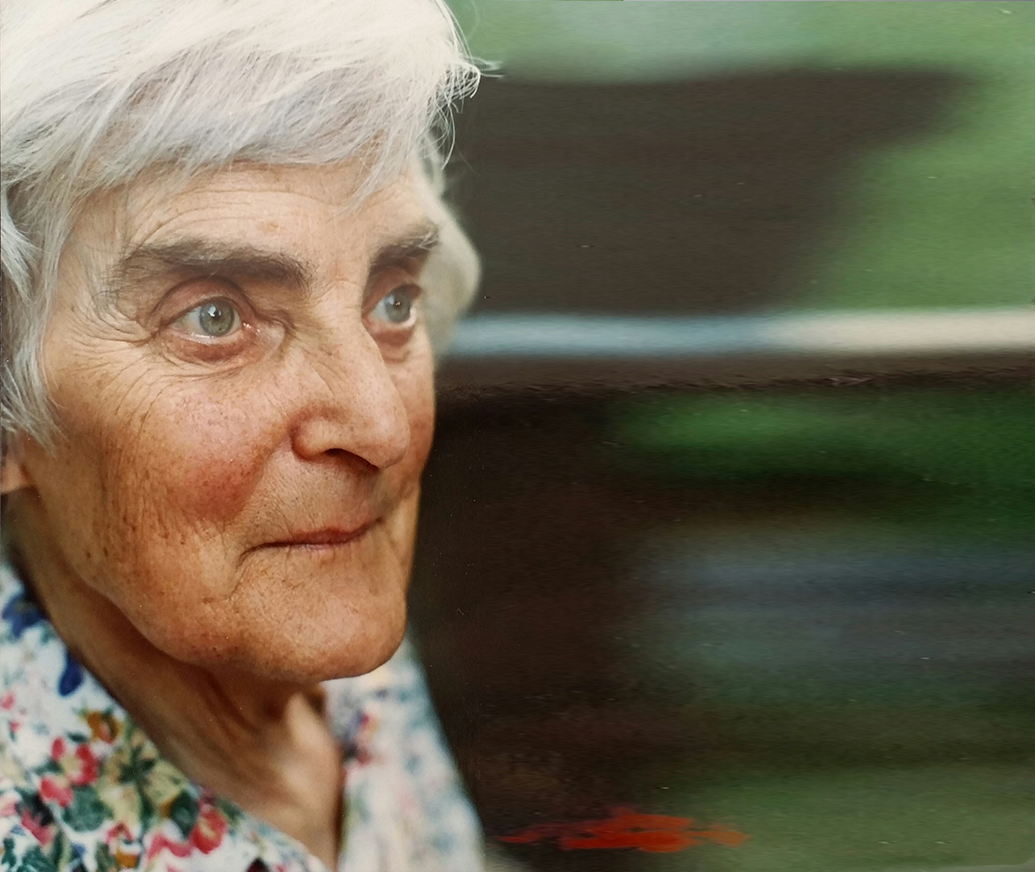Alice’s Legacy
Alice (Allie) Pulsifer Doyle was interested in and curious about everything around her. She enjoyed the woods, delighting in wildflowers and tiny frogs; the art of many times and cultures, especially Japan; the history of practically anything — she always wanted to know how things got the way they are; science, from the way of bats to the new possibilities of the Hubble telescope (she was very disappointed when it didn’t work right); the nuances of language and the history of words; the antics of Congress on C-Span.
And her greatest interest was always people. Alice could make friends instantly, in a subway or a cafeteria, because she genuinely wanted to know about anyone she talked to. She had the gift of accepting without judgment or prejudice, and she was always warm and always available to her friends. Over the years, she shared her house and table with countless many for a summer, a year or two, and was always ready to help when needed with money or with hours of time.
Although she entered Bennington College as a painting major, when she learned from Professor Lewis Jones about the injustices working people suffered, she changed her major to economics and worked between terms for unions and workers’ schools. Injustice outraged Alice, especially racism and homophobia.
She was an activist in many ways. In the 60s, she brought about the desegregation of a local beach when management would not admit her family party with a black child. She marched in disarmament marches in New York and Washington and in many local demonstrations against the Vietnam War. She helped establish the Connecticut Chapter of SANE/FREEZE. She formed friendships across racial, economic, and cultural boundaries. Over time, she was increasingly appalled at the way she saw our society turning its back on our most vulnerable people. She also became very concerned for the fate of the earth and its environment. Although she stopped painting, Alice never lost her painter’s eye. She found beauty in the changing light, in great trees, in a child’s drawing, in paintings, in gardens, and in the wild. She loved to make arrangements of the wildflowers she found — she would pull to the side of the road for a good one, and did not always let a fence or a “No Trespassing” sign stop her when she wanted to explore.
Her other form of artistry was cooking, and she gathered a nine-foot shelf of cookbooks over the years. She read them all and used them to create spectacular meals to share with friends, who remember the food and the hilarious conversation that accompanied it, since she was never without a sense of the ridiculous. Even in her illness, she never lost her sense of humor: at her last hospitalization, her niece heard a surgical resident describing her case to a colleague, ending with “and now she’s in there making jokes!” She always had the gift of joy. While it was her wish that the foundation be named after her ancestor and collector of the paintings, Lawson Valentine, we continue in her vision and spirit.
Alice Pulsifer was born on Oct. 26, 1916, in New York City, daughter of Ethel Burke and Lawson Valentine Pulsifer. While born in the city, she spent a lot of time in their Hudson Valley home, where she developed a deep love of Nature. She attended the Chapin and Shipley Schools, then Bennington College, graduating in 1939.
After some graduate study at Columbia, Allie left to marry Joseph Doyle in 1942 and he pursued a career in academia. After the war, they lived in Washington, PA, Mountainville, NY, Chestertown, MD, Springfield, MA, and Hartford. They were divorced in 1970.

Alice Pulsifer Doyle (Allie)
